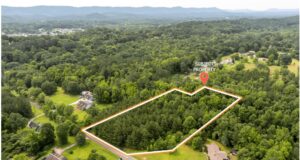Native Plants, Natural Beauty: Sustainable Landscaping for Modern Homes
Modern homeowners are discovering that the most stunning landscapes aren’t always the most complex ones. Sustainable landscaping with native plants offers a perfect blend of natural beauty, environmental responsibility, and practical benefits that make it an ideal choice for today’s eco-conscious families.
What Makes Native Plants Special?
Native plants are species that naturally occur in your specific region, having evolved over thousands of years to thrive in local soil conditions, climate patterns, and ecosystems. Unlike exotic plants that require constant care and resources, native species have already adapted to your area’s rainfall, temperature fluctuations, and seasonal changes.
This natural adaptation means less work for homeowners and more benefits for the environment. Native plants typically require minimal watering once established, resist local pests and diseases naturally, and provide essential habitat for local wildlife including birds, butterflies, and beneficial insects.
Environmental Benefits That Matter
Choosing native plants for your landscape creates a ripple effect of positive environmental impacts. These plants help restore natural ecosystems that have been disrupted by urban development. They support local pollinators, which are crucial for food production and biodiversity.
Native plants also excel at managing stormwater runoff. Their deep root systems, developed over millennia, penetrate soil more effectively than shallow-rooted exotic species. This means better water absorption during heavy rains and reduced erosion on your property.
From a broader perspective, native landscaping reduces the need for fertilizers, pesticides, and excessive irrigation. This decreased chemical usage protects local water sources and reduces your household’s environmental footprint significantly.
Practical Advantages for Homeowners
The practical benefits of native plant landscaping extend far beyond environmental considerations. Maintenance requirements drop dramatically once these plants establish themselves in their natural habitat. Most native species need watering only during their first year, after which they rely primarily on natural rainfall.
Pest problems become less frequent and severe because native plants have natural defenses against local insects and diseases. This means fewer chemicals, less spraying, and more time to enjoy your garden rather than constantly maintaining it.
Cost savings add up quickly. Reduced water bills, minimal fertilizer purchases, and fewer plant replacements make native landscaping an economically smart choice. Many native plants are also longer-lived than exotic alternatives, providing years of beauty with minimal investment.
Design Principles for Modern Appeal
Contemporary native plant landscapes can be every bit as sophisticated and stylish as traditional designs. The key lies in understanding design principles that highlight natural beauty while creating visual interest throughout the seasons.
Texture plays a crucial role in modern native plant design. Combining grasses with broad-leafed perennials, adding structural shrubs, and incorporating plants with interesting bark or seed heads creates visual depth. Repetition of key species throughout the landscape provides unity while maintaining the natural, organic feel that makes native plants so appealing.
Color coordination using native plants offers exciting possibilities. Many regions have native species that bloom in succession throughout the growing season, providing continuous color changes. Planning these blooming sequences creates a dynamic landscape that evolves naturally with the seasons.
Choosing the Right Plants for Your Region
Successful native plant selection requires understanding your specific microclimate and soil conditions. Factors like sun exposure, drainage patterns, and existing soil type all influence which native species will thrive in your particular location.
Research your area’s native plant communities by observing local natural areas, parks, and preserves. Note which plants grow together naturally and how they’re distributed across different conditions. This observation provides valuable insights for creating authentic, sustainable plant combinations in your own landscape.
Consulting with knowledgeable professionals at specialized garden centers can provide invaluable guidance. A landscaping garden center such as Gateway Home and Garden, can help identify native species suitable for your specific site conditions and design goals, ensuring your investment in native plants pays off with healthy, thriving landscapes.
Getting Started with Native Landscaping
Beginning your native plant journey doesn’t require completely replacing your existing landscape overnight. Start with small areas where you can experiment with native species and observe their performance. This approach allows you to learn about different plants while gradually transitioning your property.
Consider beginning with areas that are challenging to maintain with traditional landscaping. Slopes prone to erosion, spots with poor drainage, or areas that receive limited irrigation are perfect candidates for native plant installation. These difficult sites often become the most successful native plant areas because the plants are naturally adapted to handle challenging conditions.
Timing your installation properly increases success rates significantly. Most regions have optimal planting windows when native species establish most easily, typically during cooler, wetter seasons that allow root development before stressful summer conditions arrive.
Long-term Success and Maintenance
While native plants require less maintenance than exotic species, they do need proper care during establishment and occasional attention thereafter. The first growing season is critical for developing strong root systems that will sustain plants through future seasons.
Understanding the natural growth cycles and maintenance needs of your chosen species helps ensure long-term success. Some native plants benefit from periodic cutting back, while others perform better with minimal intervention. Learning these individual requirements helps maintain the natural beauty and health of your sustainable landscape.
Creating Your Natural Oasis
Sustainable landscaping with native plants represents more than just a gardening trend. It’s a way to create beautiful, functional outdoor spaces that work with natural systems rather than against them. The result is a landscape that becomes more beautiful and more valuable over time, providing lasting enjoyment while contributing positively to the local environment.
By choosing native plants for your modern home, you’re investing in a landscape solution that delivers immediate visual appeal while building long-term sustainability and ecological health for generations to come.















